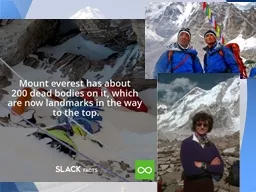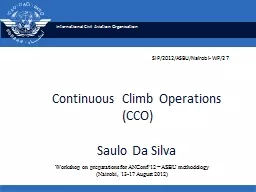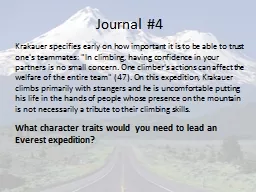PPT-The group begins its second acclimatization climb
Author : danika-pritchard | Published Date : 2020-04-05
from Base Camp to Camp One Hall wants them to spend two nights at Camp One then spend three nights at Camp Two before heading back down to Base Camp Krakauer
Presentation Embed Code
Download Presentation
Download Presentation The PPT/PDF document " The group begins its second acclimatiz..." is the property of its rightful owner. Permission is granted to download and print the materials on this website for personal, non-commercial use only, and to display it on your personal computer provided you do not modify the materials and that you retain all copyright notices contained in the materials. By downloading content from our website, you accept the terms of this agreement.
The group begins its second acclimatization climb : Transcript
Download Rules Of Document
" The group begins its second acclimatization climb "The content belongs to its owner. You may download and print it for personal use, without modification, and keep all copyright notices. By downloading, you agree to these terms.
Related Documents














